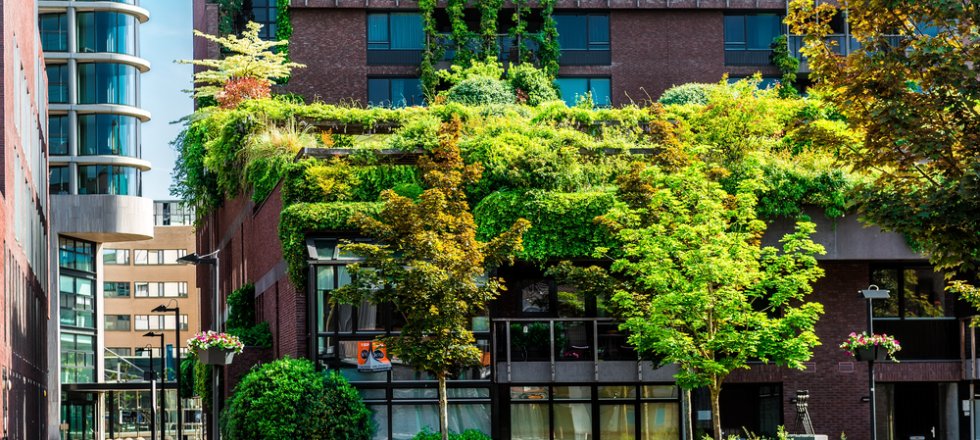Nature and health in the city
Nature is something we desperately need in the city: to provide clean air, drain water and provide a healthy living environment for people. As cities are expanding, government, citizens and businesses increasingly feel the impact of how important nature is to urban environments. Wageningen Environmental Research is working on projects involving threatened animal and plant species in the city, tiny forests, well-being, nature-inclusive construction, urban agriculture and green business parks.
Green business parks
Current industrial estates were developed around the idea that businesses should be easily accessible and need space for buildings, parking spaces and storage. Wageningen Environmental Research has identified a number of social challenges faced by industrial estates. These challenges could be remedied by nature-based solutions that make the estates more sustainable, healthier and more climate-resilient. Employees function better when their work environments inspire movement and rest. We have supported companies such as Heineken and Brainport Eindhoven in incorporating these solutions in their landscaping management. The result is a thriving, biodiverse, inspiring industrial estate.
- Strategic process advice and positioning: how can ambitions be realised?
- Inspiring business park design examples, including water and greenery for a productive and healthy work environment, and advice on maintenance
- Research on how plants can contribute to a better indoor climate
Urban biodiversity
Experiencing nature is also possible in the city: in your own garden, park, schoolyard or workplace environment. Cities are increasingly discovered by wild animals and plants, making the city a novel ecosystem in itself, with a unique combination of species and interactions. The design and management of the city determines for which species it can serve as a habitat. By applying ecological management in public and private green spaces, citizens, businesses and the local government contribute to the conservation of urban biodiversity such as wild bees and accommodate co-habitation with animals in the city. Such a natural city also creates an environment in which children and adults can marvel at the beauty of urban biodiversity.
- Urban tiny forests to support biodiversity
- Biodiversity-friendly construction guidelines and advocacy
- Biodiversity for human health
- Urban pests and vector-borne diseases
- Citizen science
Greenery for health and social cohesion
Natural surroundings can benefit human health in many ways. Wageningen Environmental Research studies issues concerning the optimal design and management of natural surroundings, the impact of landscape and urban design on social safety and possibilities for using existing natural surroundings to influence human behaviour and well-being. More nature around the home has been linked to improved mental health, reduced stress, healthy weight and fewer Ritalin prescriptions for children. Also, neighbourhood green areas such as parks and public gardens can contribute to social cohesion in that neighbourhood.
- Green school yards and fruit trees for schools promoting creative play, healthy nutrition and a better social climate for children
- The value of urban gardening projects in providing social contact and stress reduction
- The value and use of public spaces such as neighbourhood parks in providing social cohesion, residential satisfaction and well-being
Nature-inclusive and climate-adaptive city design
Nature-inclusive and climate-adaptive construction offers many opportunities, such as offsetting the extreme weather effects caused by climate change through the construction of empty canals or reservoirs that collect rainwater. Wageningen Environmental Research is involved in the development of various sustainable residential districts, such as the green Geerpark in Vlijmen and the planned circular neighbourhood of Bosrijk in Eindhoven. Various studies indicate that the value of real estate is well higher in case it has a view of water (15%), public space (10%), a park (6%) or public garden (5%).
- Nature-inclusive and climate-adaptive construction of neighbourhoods, for example for social housing
- Tailor-made advice and solutions for urban water management and heat stress reduction, such as green roofs and innovative techniques for water retention
- Circular and sustainable design such as rainwater purification and reuse, solar energy or bioenergy, recycled and upcycled building materials and waste management solutions
- Unfortunately, your cookie settings do not allow videos to be displayed. - check your settings

